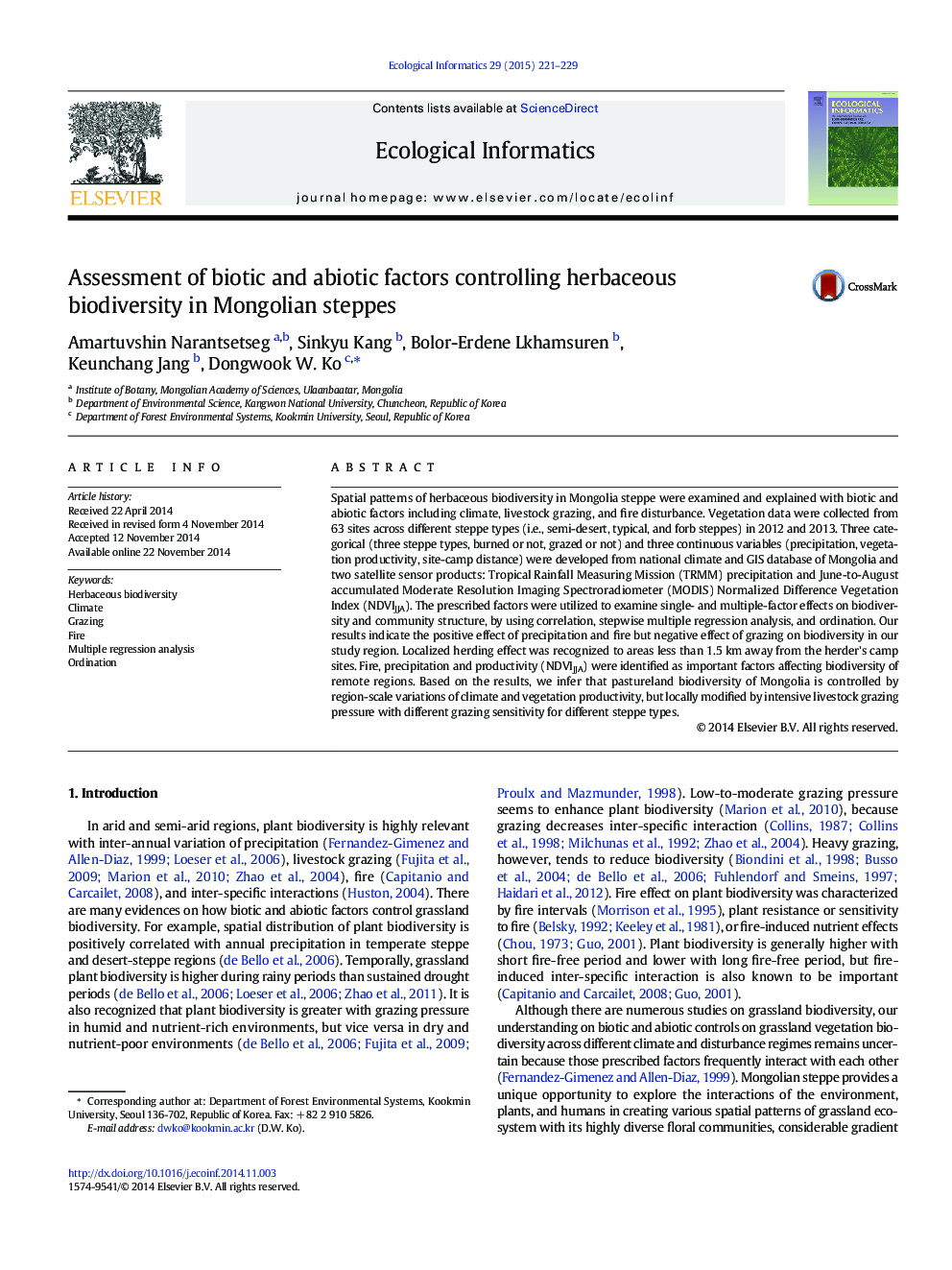| Article ID | Journal | Published Year | Pages | File Type |
|---|---|---|---|---|
| 4374809 | Ecological Informatics | 2015 | 9 Pages |
•Factors affecting herbaceous biodiversity of Mongolian steppes were investigated.•Steppe type, fire, grazing, productivity, and climate were considered as the factors.•Field and satellite data were utilized for multiple regression and NMDS.•Collective factors explained spatial biodiversity patterns better than any single factor.•Large scale and localized effects on biodiversity found based on variable types
Spatial patterns of herbaceous biodiversity in Mongolia steppe were examined and explained with biotic and abiotic factors including climate, livestock grazing, and fire disturbance. Vegetation data were collected from 63 sites across different steppe types (i.e., semi-desert, typical, and forb steppes) in 2012 and 2013. Three categorical (three steppe types, burned or not, grazed or not) and three continuous variables (precipitation, vegetation productivity, site-camp distance) were developed from national climate and GIS database of Mongolia and two satellite sensor products: Tropical Rainfall Measuring Mission (TRMM) precipitation and June-to-August accumulated Moderate Resolution Imaging Spectroradiometer (MODIS) Normalized Difference Vegetation Index (NDVIJJA). The prescribed factors were utilized to examine single- and multiple-factor effects on biodiversity and community structure, by using correlation, stepwise multiple regression analysis, and ordination. Our results indicate the positive effect of precipitation and fire but negative effect of grazing on biodiversity in our study region. Localized herding effect was recognized to areas less than 1.5 km away from the herder's camp sites. Fire, precipitation and productivity (NDVIJJA) were identified as important factors affecting biodiversity of remote regions. Based on the results, we infer that pastureland biodiversity of Mongolia is controlled by region-scale variations of climate and vegetation productivity, but locally modified by intensive livestock grazing pressure with different grazing sensitivity for different steppe types.
